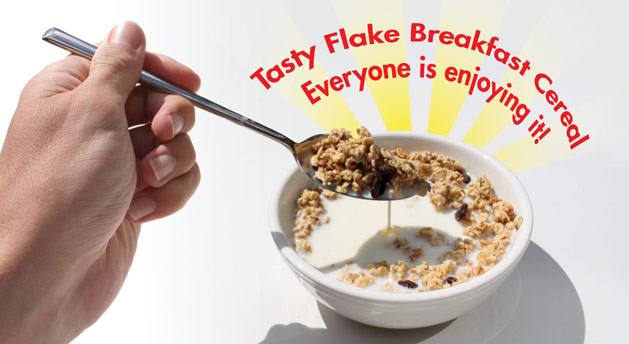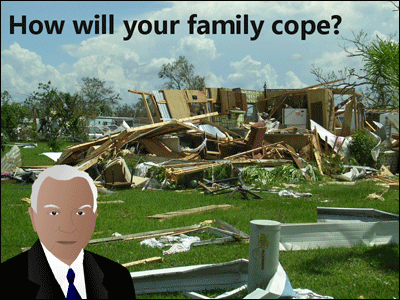
Students will build persuasive writing skills and media literacy as they explore techniques of propaganda and develop commercials that persuade viewers.
App: Frames™

The term propaganda may make you think of evil empires or the “red scare” of the 40s and 50s, but we are surrounded by propaganda of a different kind. The elements of propaganda are used, often very effectively, in commercials and advertisements. One of the best ways to understand how we can be manipulated by these techniques is to create media in the same form. In this project, students will create an advertisement that employs the techniques of propaganda to sell a product or service.
Propaganda exists around us in many forms. To help students move toward a strong understanding of how propaganda is used, work as a class to develop a definition. Student responses may look something like this:
Ask students to share examples of times they have seen or heard propaganda and how it affected them. Would knowledge of the practice of propaganda have changed the effectiveness of the message? Brainstorm reasons that leaders, organizations, and companies employ propaganda.
Introduce the various forms of persuasive communication referred to as propaganda. Some major forms are:
You will want to review and discuss each type of propaganda as a class. You may want to gather video clips of a variety of propaganda techniques, or find a series of ads in familiar magazines that demonstrate them. Be sure to preview the commercials first and select examples you feel are appropriate for your classroom and that exemplify specific propaganda techniques. Once you have found examples, work as a class to identify the different techniques used, and discuss how effective they were.
After students have completed their investigation of propaganda techniques, divide them into small groups. Ask each group to brainstorm a new product or service that will be advertised in a commercial utilizing at least two propaganda techniques.
Once they have chosen a product or service, have them brainstorm different ways they could use propaganda techniques to sell it. Once they have a broad list, the group should add details that describe how each technique might be applied to their product. Have them choose the two most effective techniques and formalize the script. To help them better envision the commercials, have each team develop a storyboard that outlines what they will show and how the images, music, and illustration will support the script.
When the scripts and storyboard are complete, have students use the tools in Frames to bring their commercials to life. Have students use the drawing tools to illustrate their product or service and animate the objects and characters to match the script. They can use Frames to record narration for the commercial and then add music and sound effects to support the animation. When they are finished, they should save the file and then click the Make button to save it as a movie or animation file they can share with others.
Present the commercials to the entire class. As a class, identify the techniques of propaganda each team chose to employ. Discuss which techniques and commercials they felt were particularly effective. You might consider inviting community members who work in marketing or advertising to give input on the commercials. You could also use the commercials as the basis for a presentation by your students to the rest of the school to improve media literacy

As students identify and discuss propaganda techniques in the samples you have shared and the examples they find, listen for their ability to identify specific details that help them recognize each technique. The final commercial will help you assess their understanding of how to apply propaganda techniques, their ability to visually convey a message, and their ability to imagine and develop a product or service.
Conserva, Henry T. Propaganda Techniques ISBN: 1410704963
Shabo, Magedah. Techniques of Propaganda and Persuasion ISBN: 1580498744
Student Propaganda Commercials
Speaking and Listening Standards
Comprehension and Collaboration
2. Integrate and evaluate information presented in diverse media and formats, including visually, quantitatively, and orally.
Presentation of Knowledge and Ideas
4. Present information, findings, and supporting evidence such that listeners can follow the line of reasoning and the organization, development, and style are appropriate to task, purpose, and audience.
5. Make strategic use of digital media and visual displays of data to express information and enhance understanding of presentations.
6. Adapt speech to a variety of contexts and communicative tasks, demonstrating command of formal English when indicated or appropriate.
Language Theme Language Standards
Conventions of Standard English
1. Demonstrate command of the conventions of standard English grammar and usage when writing or speaking.
Knowledge of Language
3. Apply knowledge of language to understand how language functions in different contexts, to make effective choices for meaning or style, and to comprehend more fully when reading or listening.
Writing Standards
Production and Distribution of Writing
4. Produce clear and coherent writing in which the development, organization, and style are appropriate to task, purpose, and audience.
6. Use technology, including the Internet, to produce and publish writing and to interact and collaborate with others
Research to Build and Present Knowledge
7. Conduct short as well as more sustained research projects based on focused questions, demonstrating understanding of the subject under investigation.
6. Creative Communicator
Students communicate clearly and express themselves creatively for a variety of purposes using the platforms, tools, styles, formats and digital media appropriate to their goals. Students:
a. choose the appropriate platforms and tools for meeting the desired objectives of their creation or communication.
b. create original works or responsibly repurpose or remix digital resources into new creations.
c. communicate complex ideas clearly and effectively by creating or using a variety of digital objects such as visualizations, models or simulations.
d. publish or present content that customizes the message and medium for their intended audiences.

Follow us on Instagram for daily inspiration

Create a thought web, cluster, flowchart, or other graphic organizer for a lesson
8 first projects to get students using technology
Creative, digital book reviews
Fun and powerful ideas with animated characters

Wixie
Share your ideas, imagination, and understanding through writing, art, voice, and video.

Rubric Maker
Create custom rubrics for your classroom.

Pics4Learning
A curated, copyright-friendly image library that is safe and free for education.

Wriddle
Write, record, and illustrate a sentence.

Get creative classroom ideas delivered straight to your inbox once a month.
Topics